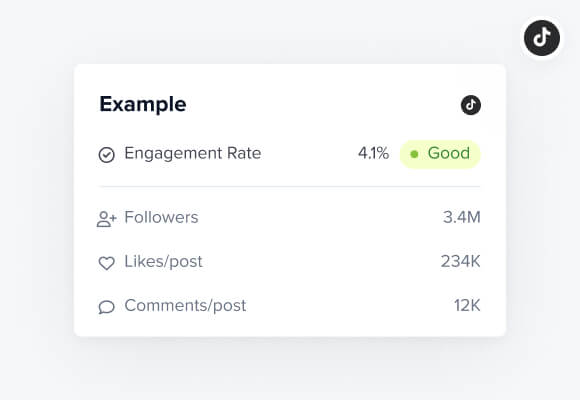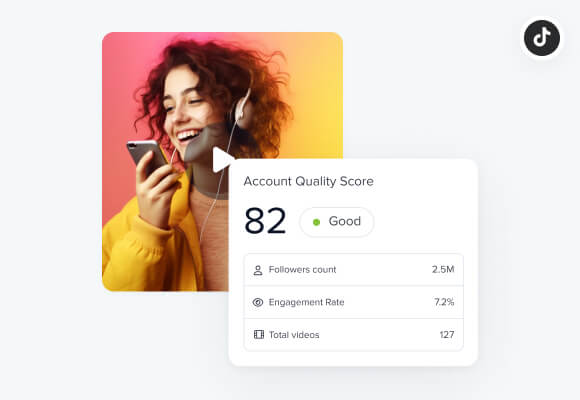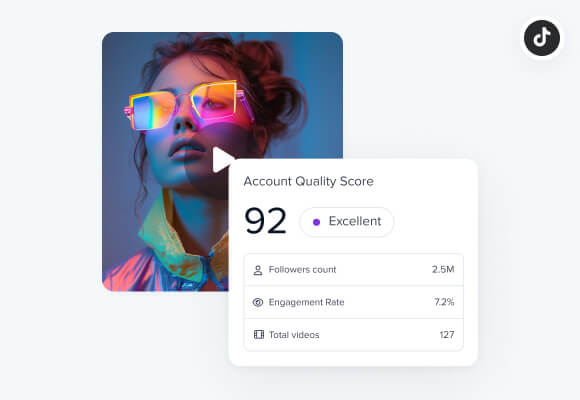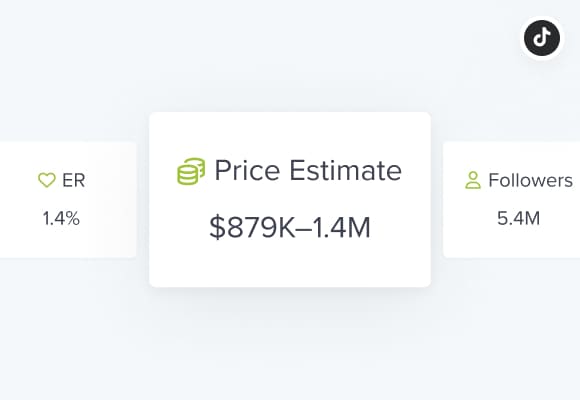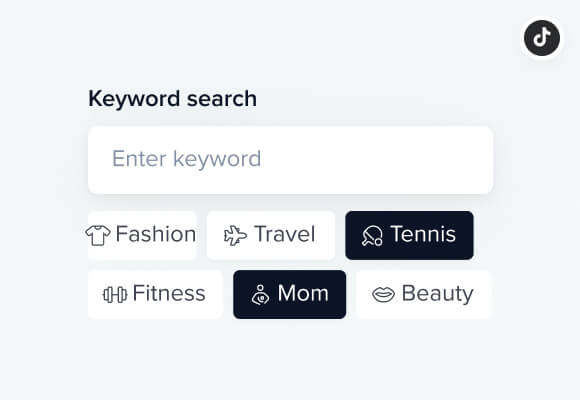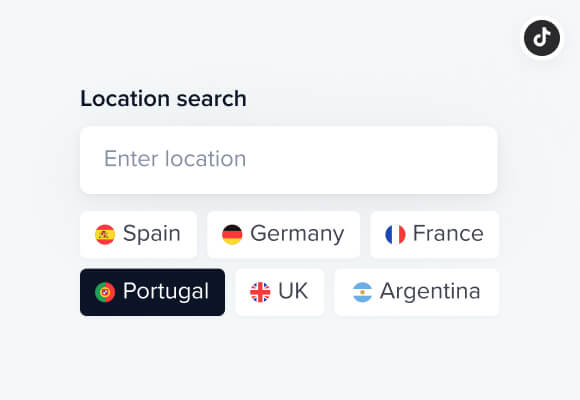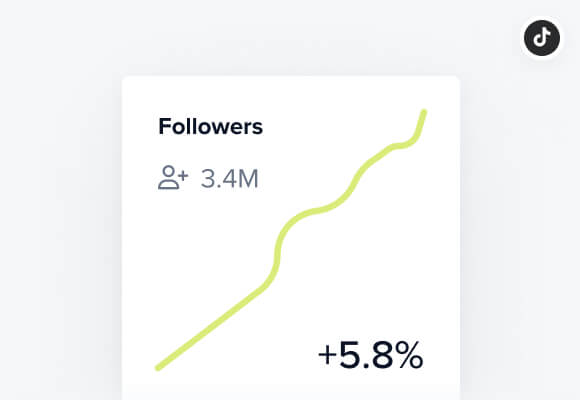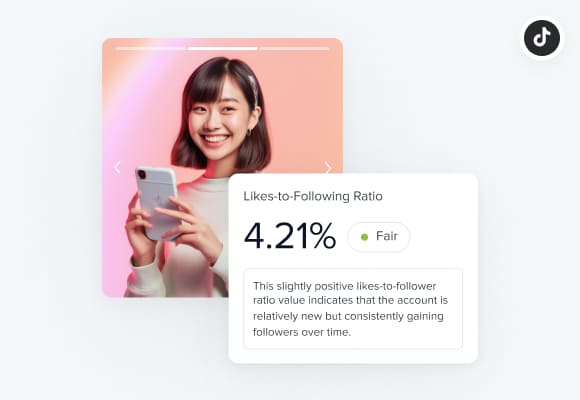Compare TikTok Accounts
Brands and agencies turn to HypeAuditor as the go-to influencer marketing software app for using powerful tools to compare TikTok followers between two profiles. With HypeAuditor’s TikTok Influencer Comparison Checker, discovering key performance metrics like followers, follower growth, and engagement rate becomes a cinch.
HypeAuditor’s TikTok Influencer Comparison Checker is a fast solution to compare TikTok users. It’s also the simplest approach for businesses that want to check TikTok metrics and compare TikTok influencers. If you want to maximize the impact of your influencer marketing budget, this free comparison tool will put you in a position to succeed.
Compare Tiktok Channels Questions
What does HypeAuditor’s TikTok Influencer Comparison Checker do?
HypeAuditor’s TikTok Influencer Comparison Checker software is a follower comparison tool that allows you to compare two different TikTok content creators. It also helps you measure them side by side so that you know how they differ in engagement rate, followers, and recent follower growth.
How can I optimize my marketing budget?
Chances are high that your marketing budget has a set limit. As a result, it’s important for you to find ways to gain more value for each dollar spent. Don’t fall for vanity metrics. Instead, use influencer marketing tools like HypeAuditor that automatically collect and provide you with key performance indicators that provide a close examination of how effective (or ineffective) a certain influencer is.
You should also be on the lookout for any “hidden gem” influencers who can provide you the same or more value at a fraction of the cost.
Put yourself in the shoes of a brand or agency. You want to launch an influencer collaboration and you’ve narrowed your shortlist to two TikTok influencers. Both of them have the same (or similar) followers, engagement, and follower growth. However, the price tag of collaborating with User A is twice as high as that of User B.
Assuming User A isn’t a celebrity who can generate additional sales purely by being a celebrity, then there’s no logical reason for choosing User A over User B. User B not only provides you a 50% discount for your collaboration, but you can use the remaining funds for other marketing purposes to generate more traffic and sales.
Why are follower counts important?
For everyday people who just wish to scroll and have fun on social media, follower counts are important because it can lead to a more enjoyable experience.
However, since most social media platforms place the TikTok follower count in a very visible area of your profile, checking follower count becomes essential for business. Brands and agencies often refer to the follower count as an initial criteria for eliminating potential influencer partners from future marketing collaborations.
This is because a follower count implies that you have a more active audience, that your influencer brand is more reliable and trustworthy, and that you have a larger potential customer base to work with, which would lead to more affiliate sales.
That’s why, even though follower counts are primarily a vanity metric, having a large follower count suggests that working with you means more possible revenue channels, making you more attractive as an influencer for collaborations.
One factor to watch out for when monitoring follower counts is unnatural spikes in followers. If you were to map out an influencer’s follower count over time, most influencers would have a relatively smooth line. As a result, sudden spikes should automatically raise suspicions.
Spikes typically happen for one of two reasons. The first is that the influencer suddenly went viral, possibly by some viral post, some mention by a celebrity, or some media coverage. The second is that the influencer purchased fake followers and bots. If you look into why an influencer’s follower count spiked, and you can’t determine a clear reason, then the most likely reason for the spike in followers is due to the purchase of fake followers.
Why is follower growth important?
While follower count is important, its primary effectiveness is in the early stages of finding influencers for collaboration. It saves brands and agencies from wasting time communicating with influencers who lack the size of audience needed.
A more insightful metric into an influencer’s performance is follower growth. When it’s positive, it’s a sign that an influencer is growing, possibly by posting compelling content. When it’s negative, it indicates that an influencer is losing followers, potentially by posting irrelevant or uncompelling content.
There are a couple of factors to consider when looking at follower growth. It’s natural for follower growth to fluctuate – One month, it might go up, then the next, it might go down. Brands and agencies may then look at follower growth over a longer period of time, like 180 or 360 days, to get a better understanding of an influencer’s trend.
What are some “red flags” for TikTok influencers?
If you’re looking for an influencer, there are several red flags to pay attention for.
One red flag is if the influencer you’re looking at follows as many or more people than they have followers. For many social media platforms, users will follow and like thousands of other users with the intent of receiving follows in return. As a rule of thumb, an influencer should have at least 3 followers for every person they follow.
Another red flag is the ratio of fake followers they have. While it’s normal for every influencer to have some number of bots and fake followers, what’s important is that the ratio remains low. This helps ensure that any money you invest into this influencer will have a good chance of resulting in a sale or conversion.
Other red flags to watch out for are negative follower growth over several months, a low engagement rate, a low Audience Quality Score, a poor personal brand, and inconsistent or infrequent posting. Not only do successful TikTok creators post consistently, but they score highly in the other metrics mentions.
How can I find a TikTok influencer?
If you’re looking for a TikTok influencer, your first step should be to searching for and comparing influencers who publish videos on topics that are relevant and related to your topic. Then you’ll want to conduct an analysis of the TikTok creators you find.
You should also consider the types of TikTok videos that your target customers want to watch. It’s entirely possible that the customers you want may not be watching videos related to the topic.
Once you understand your target audience as well as the influencers you want to work with, you should look at key engagement metrics. By adopting a data-driven approach, you reduce the risk of inefficiently spending your marketing budget. But not all statistics are created equal or have equal impact on the influencer discovery process. For example, follower counts are good for initially filtering out candidates, while AQS and engagement rate provide a better picture about how well a collaboration will go.
On a qualitative note, it’s a good idea to look for TikTok creators who are engaging with their audiences. They should also have a personal brand, credibility within their niche, good visibility on the platform, and a loyal follower base.
For example, some of the “best” TikTok creators for brands and agencies aren’t mega-influencers with millions of followers, but rather micro-influencers who have followers in the low thousands. Because of their smaller size, micro-influencers are often overlooked, yet they do have a very engaged audience and are able to target specific niches more easily.



